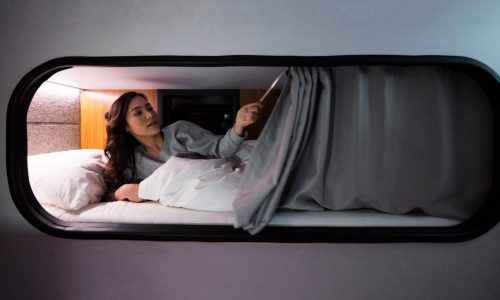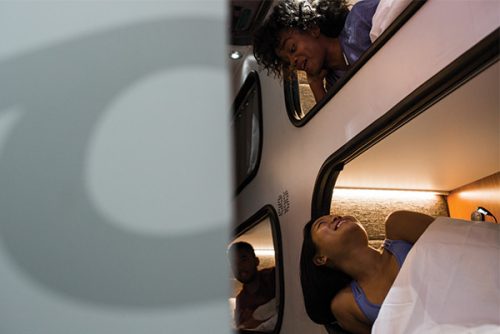Planes, trains, and automobiles — we all have our preference. And at one company in California, the team is trying to smooth bus travel to broaden commuters’ options for a blissful night’s sleep.

Leaving on a jet plane
Not everyone wants to fly. While many enjoy the feel of take-off and landing and the high speed at which they can travel from A to B, others see planes as worrisome tin cans of doom, suspended in the air by unreliable magic. I consider myself mostly the former, with a hint of the latter for balance.
In truth, I’d rather catch a train, where the smooth ride sends me into blissful sleep, only occasionally interrupted by a snap of “Damn, did I miss my stop?!”.
But trains are limited to where their tracks lead, which is why so many people still opt to travel by bus. But who can sleep on a bus when the roads are dotted with potholes and cracks? I can’t, and neither can many of the 10000 passengers of the Cabin bus, an overnight service running between Los Angeles and San Francisco.
Cabin bus travel
To address complaints about the road conditions affecting costumers’ sleep, the Cabin team decided to challenge gravity using a Raspberry Pi and the electric motor from a hoverboard in their new venture Cabin Cloud.
Introducing the first active suspension system designed specifically with passenger sleep in mind. Combining patent-pending software and hardware, our technology mutes ‘road turbulence’ and dramatically reduces vibration, so you can get a good night’s sleep while on a moving vehicle.
“We can isolate a passenger’s body, and input frequencies that help people relax and fall asleep,” explains Cabin CTO Tom Currier. “We have a set of sensors that are measuring the acceleration of the vehicle, and also the bed, to compute in real time what we should be cancelling out.”

The sensors are accelerometers, two per bed, that measure the bumps from the road and adjust the bed accordingly — up to 1000 times a second. The Cabin Cloud beds only adjust for motion up and down: the team isn’t too concerned about back-and-forth movements due to breaking too hard or turning corners, since Cabin busses predominantly travel on wide, open highways.
Delve a little deeper
Check out this article from Wired for more about the project, and about how similar tech is implemented in trucks for long-haul drivers, and in aeroplanes for turbulence-free travel. You can also sign up for the Cabin Cloud newsletter here.
But the big question about Cabin Cloud is…
Does it have Bluetooth?
Website: LINK
